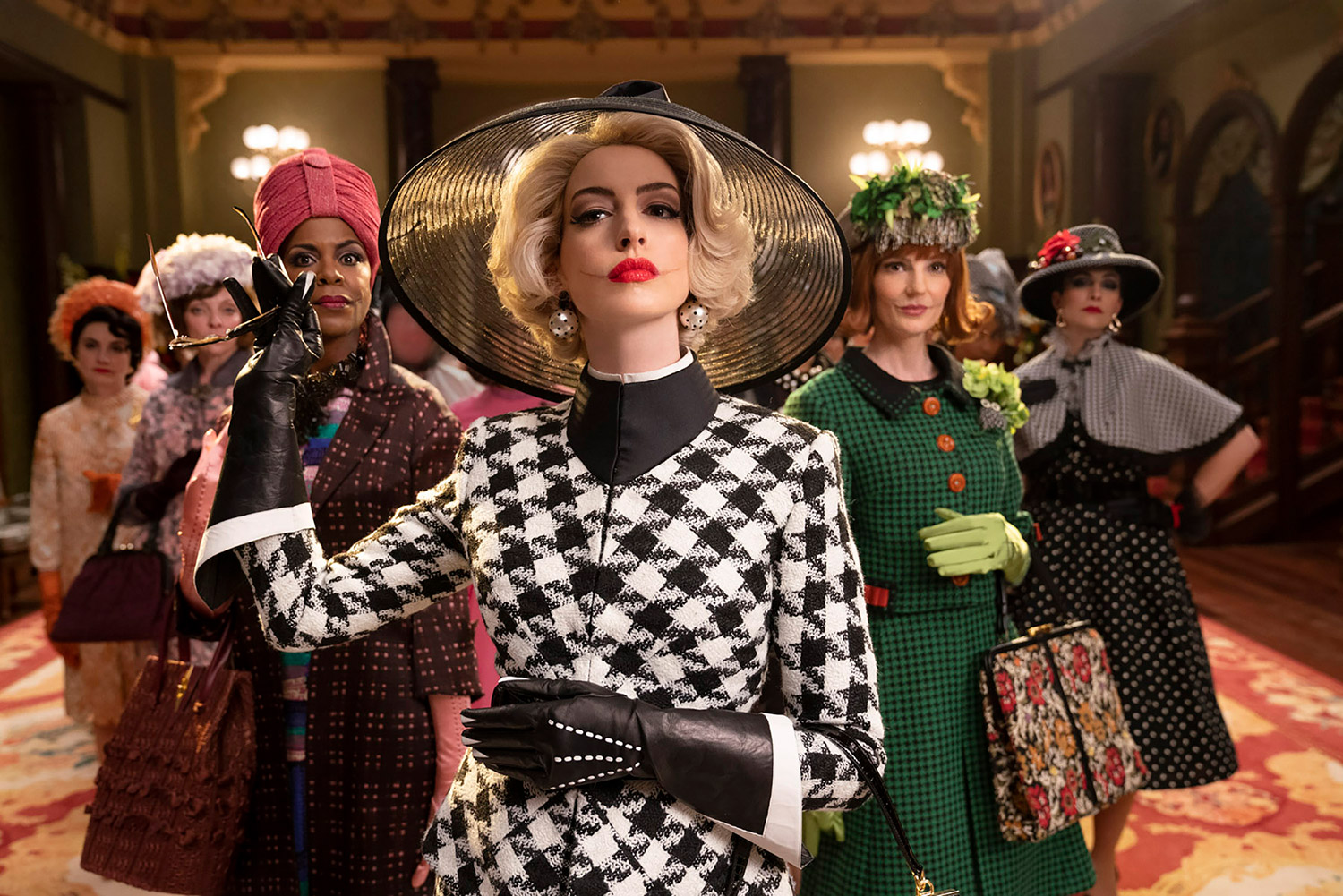Hollywood has few directors who exude the pure, giddy joy one can find in every beat of a Robert Zemeckis film. From the Beatles-infused start of his career in I Wanna Hold Your Hand to sci-fi (Contact) to horror (What Lies Beneath) to a substance-abuse drama (Flight) to a classical throwback (Allied) to the altogether strange (Welcome to Marwen), Zemeckis has mastered the filmic language of momentum and movement to deliver entertainment of the highest order in virtually every decision he makes. Returning to the world of potions after Death Becomes Her, his adaptation of Roald Dahl’s The Witches doesn’t chart bold new territory for the director, but he does brew an entertaining concoction of humor and terror.
While still injecting scares that will haunt any unsuspecting child who tunes in, Zemeckis and co-writers Kenya Barris and Guillermo del Toro’s structure recalls what Nicolas Roeg conjured in his 1990 adaptation, albeit with a few notable changes. As one might expect from the director’s work, he swaps out Jim Henson’s frightful puppetry and elaborately grotesque prosthetics for CGI wizardry, offering more control over his funhouse-ride setpieces, even if the trade-off means some imagery feels more ephemeral. The handheld, fittingly chaotic camerawork in Roeg’s version, composed in 1.85.1, is swapped for a more polished presentation and wider framing at 2.39:1. Far from the bland, pre-viz-heavy work done in much of Hollywood, Zemeckis still precisely knows where to put the camera and when to move it for the maximum adrenaline rush, and his orchestration and world-building here is top-notch. When it comes to narrative specifics of the adaptation, there’s no girl in a painting (swapped for something peculiar enough to cause its own nightmares) nor carriages being pushed off cliffs, and the ending sticks closer to Dahl’s novel with Zemeckis dialing up its bizarre nature to gleeful eleven. The most significant update, however, comes with its setting and casting.
Taking place in December 1968, we’re now in Alabama and our protagonist is a young Black boy named Charlie, played by newcomer Jahzir Kadeem Bruno, with moderately distracting storybook-style narration from Chris Rock as an older version of the character. Charlie’s parents have been killed in a car accident—as seen in a heartbreaking, brilliantly executed shot—and he’s now being raised by his grandma Agatha (Octavia Spencer). Having an encounter with witches as a child, she needs no convincing that they are real. The witches have now returned to terrorize Charlie, causing them to jet to a seaside hotel, only to have the Grand High Witch (Anne Hathaway) and her army of followers descend. In bringing a Black perspective to the 60s-set story, cultural touches are added, including food and music meant to cheer Charlie up after his family tragedy. Societal prejudices are also explored, notably the hotel’s Black bellboy surprised to see Charlie and his grandmother check into this lavish establishment. The typical guests are “rich white people,” says Spencer’s character, noting that witches only prey on society’s poor and overlooked. These themes of othering and feeling like one is an outsider to a society constantly judging and preying on the disadvantaged certainly adds a compelling layer to this 2020 update, even if it’s mostly discarded for setpiece hijinks after the first act.
In Zemeckis’ hands, however, these setpieces do indeed deliver. Featuring truly nail-biting, body-contorting escapes through vents, a chase in a labyrinth of mousetraps, and witches exploding as they go through irrevocable transformations, the appeal of the unbridled fun of this remake is clear for the director. Original development of the project fell to del Toro as a stop-motion, Alfonso Cuarón-backed feature, and one can imagine where darker elements were shaved down. Zemeckis keeps proceedings fairly zippy and vibrant, and this entire endeavor plays like an easy lay-up to bounce back after audiences had little interest in Welcome to Marwen, though that’s not a criticism—it’s rather comforting to be in the hands of someone with such a masterful grasp on tone.
Continuing to embracing high camp after Serenity, Anne Hathaway is in delicious scenery-chewing form as the Grand High Witch, not so much emulating Anjelica Huston’s performance––which Hathaway herself recently praised as “flawless and iconic”––but providing her own strange blend of horror. The wide smiles across her Jokerized face and lack of certain appendages provide a healthy dose of frightening scares. Meanwhile, her brief banter with hotel manager Mr. Stringer (Stanley Tucci, putting on a delightfully good-mannered Southern accent) results in the most laughs to be had.
Making the kind of movie where thunder loudly claps, lightning strikes, and the camera pushes more than once when Spencer’s character mentions the word “witch,” Zemeckis is here to frighten and entertain with a knowing wink. At the end of the adventure, one wonders exactly why the director thought he needed to retell this story, considering how the influence of Roeg’s film is felt throughout, but he still adds his own particular, nimble flair to the proceedings. With a grand score by Alan Silvestri that kicks up at every possible turn and extravagantly over-the-top Hathaway performance, this update on The Witches is a family-friendly Halloween treat that still boasts Zemeckis’ brand of the bizarre and a clear-eyed vision that seems all the more rare in today’s Hollywood.
The Witches arrives on HBO Max on October 22.

